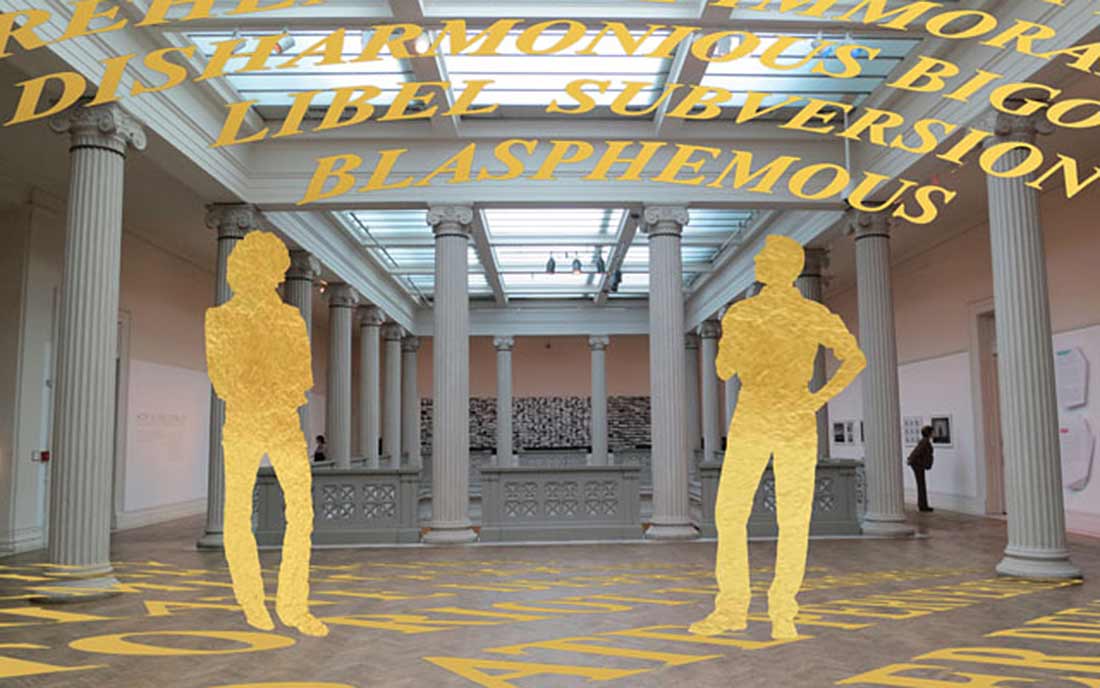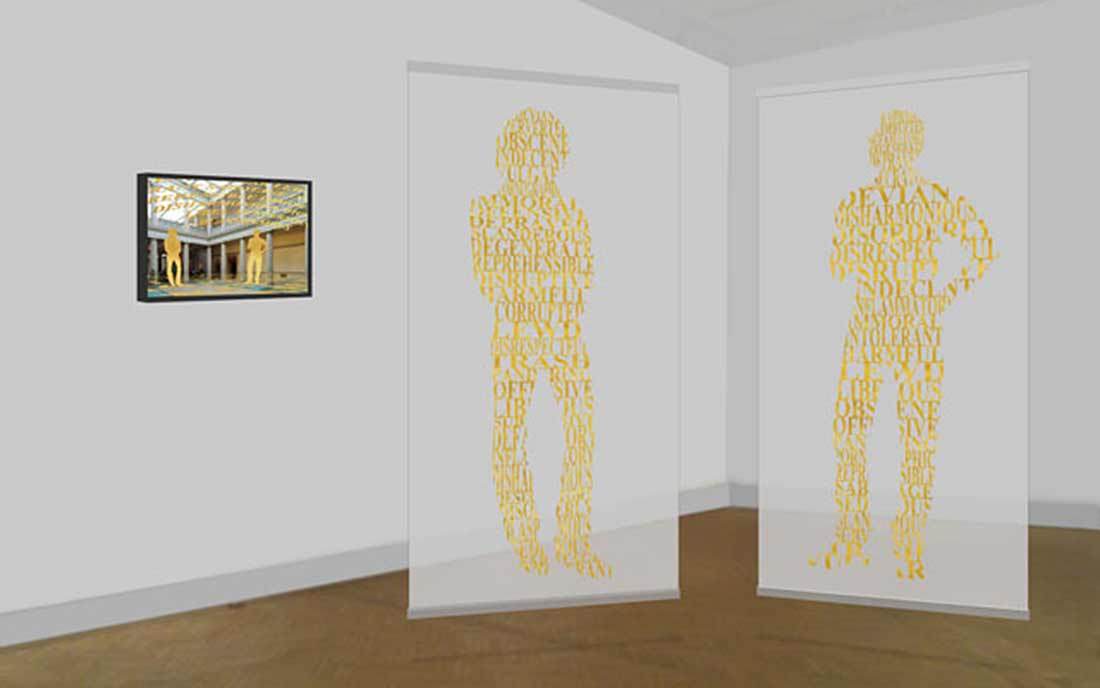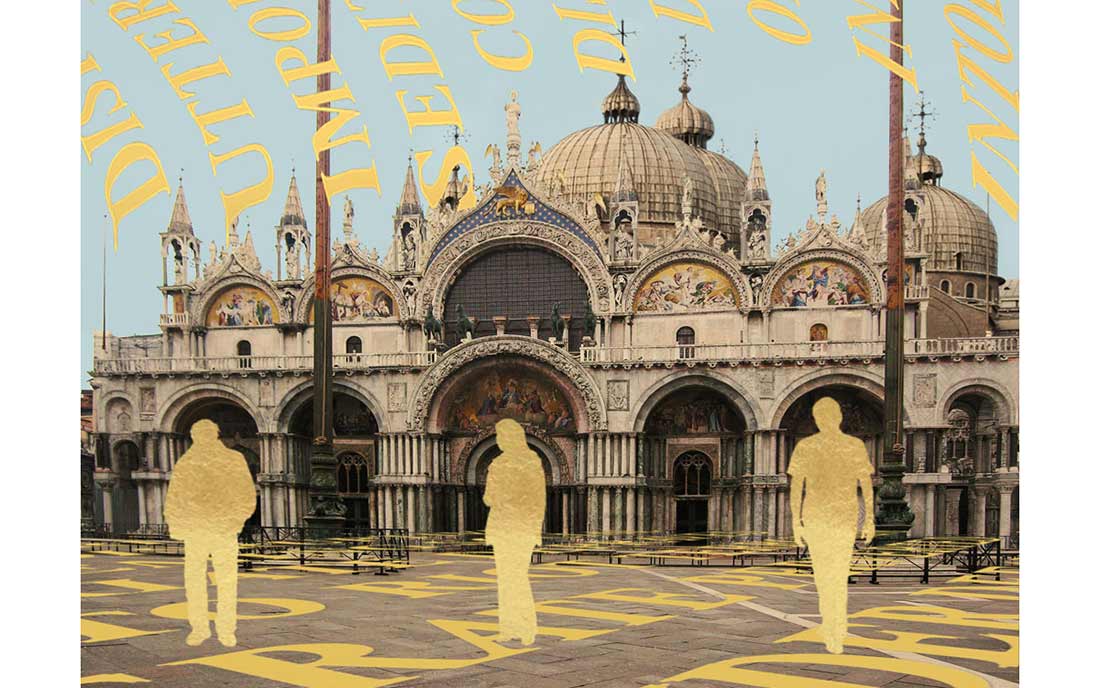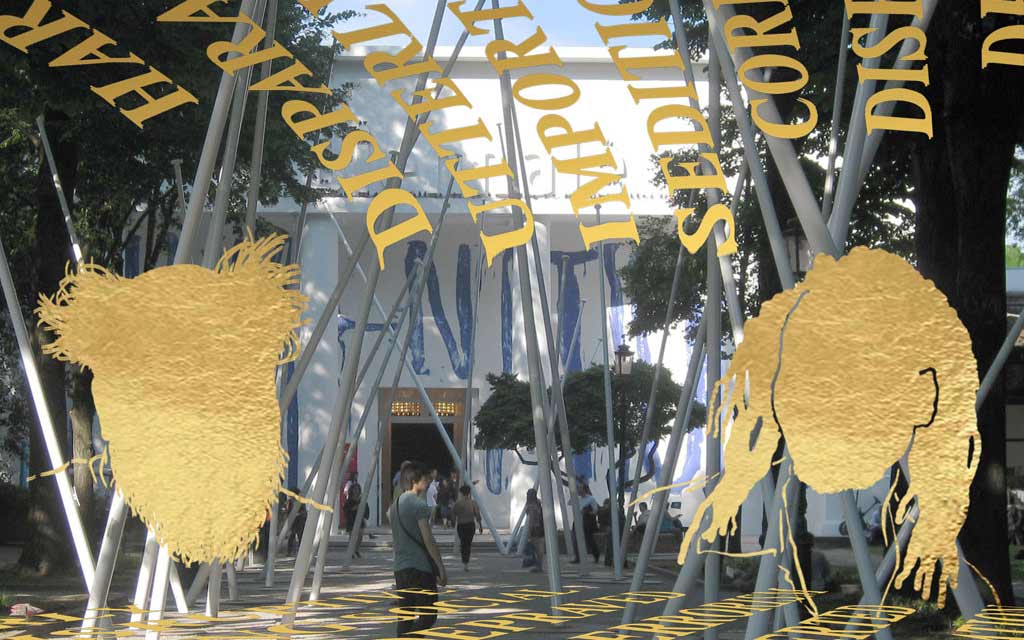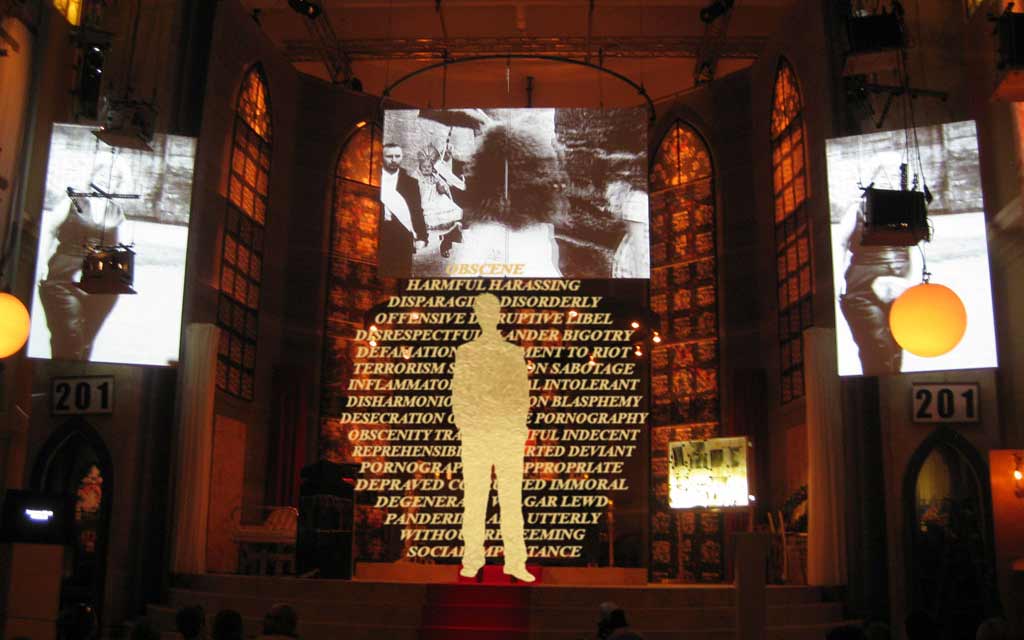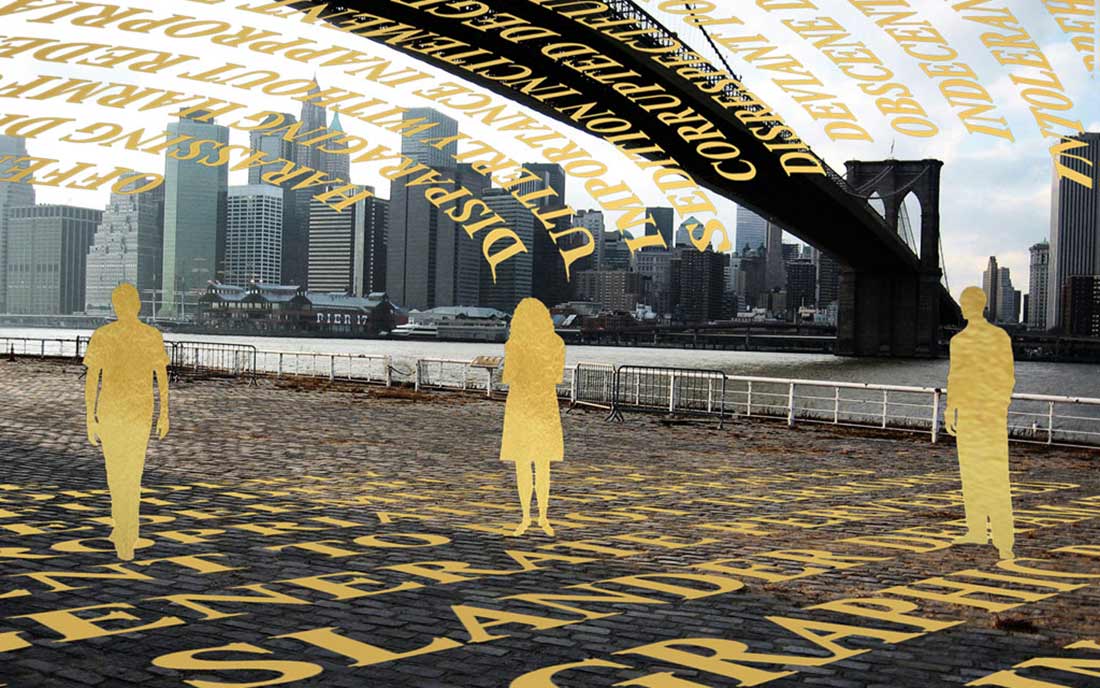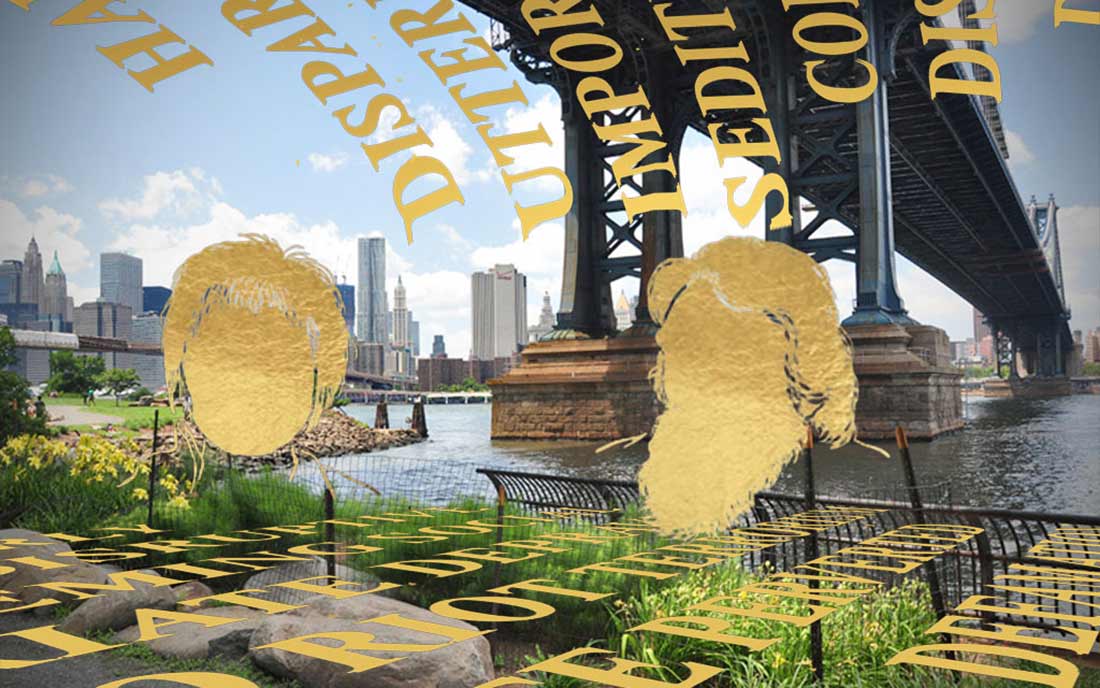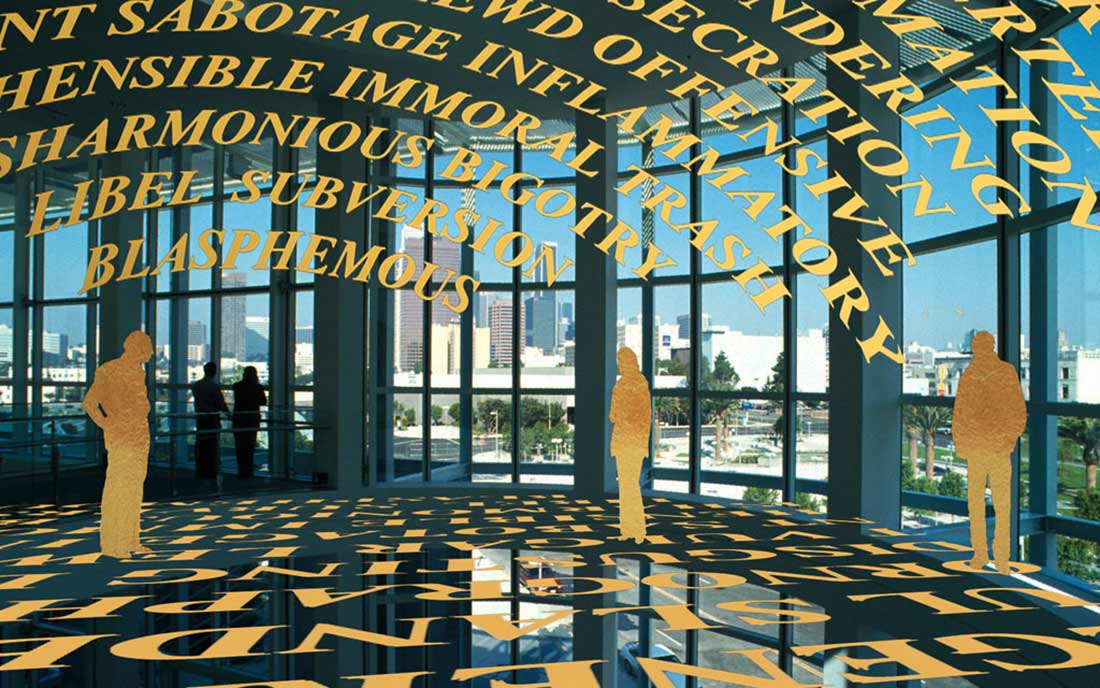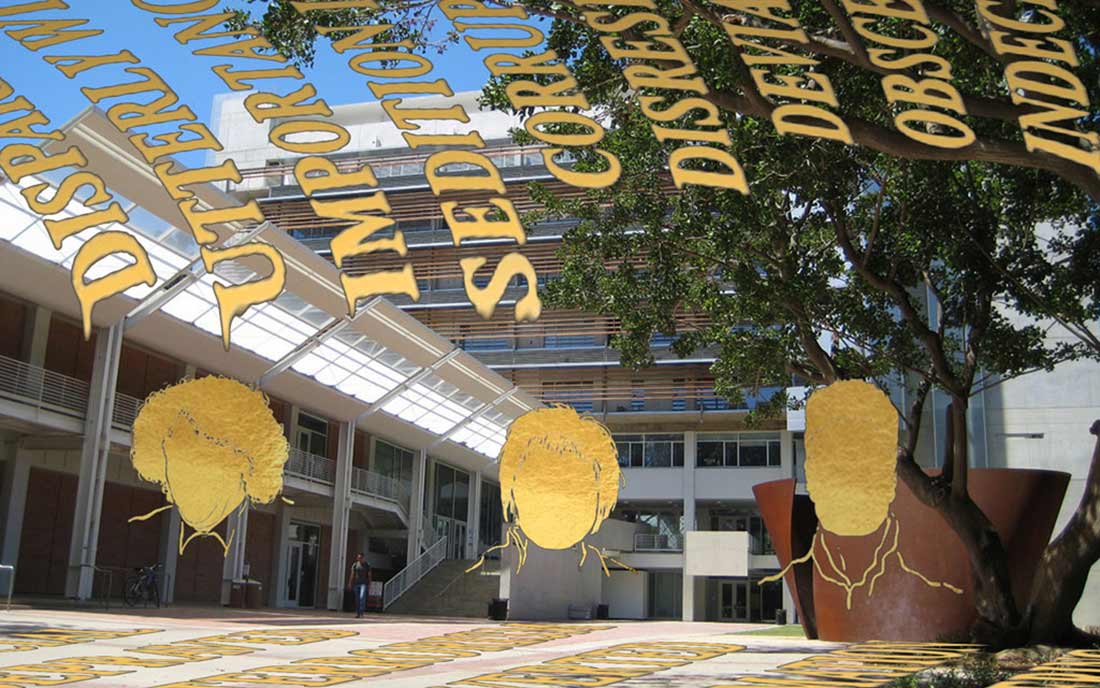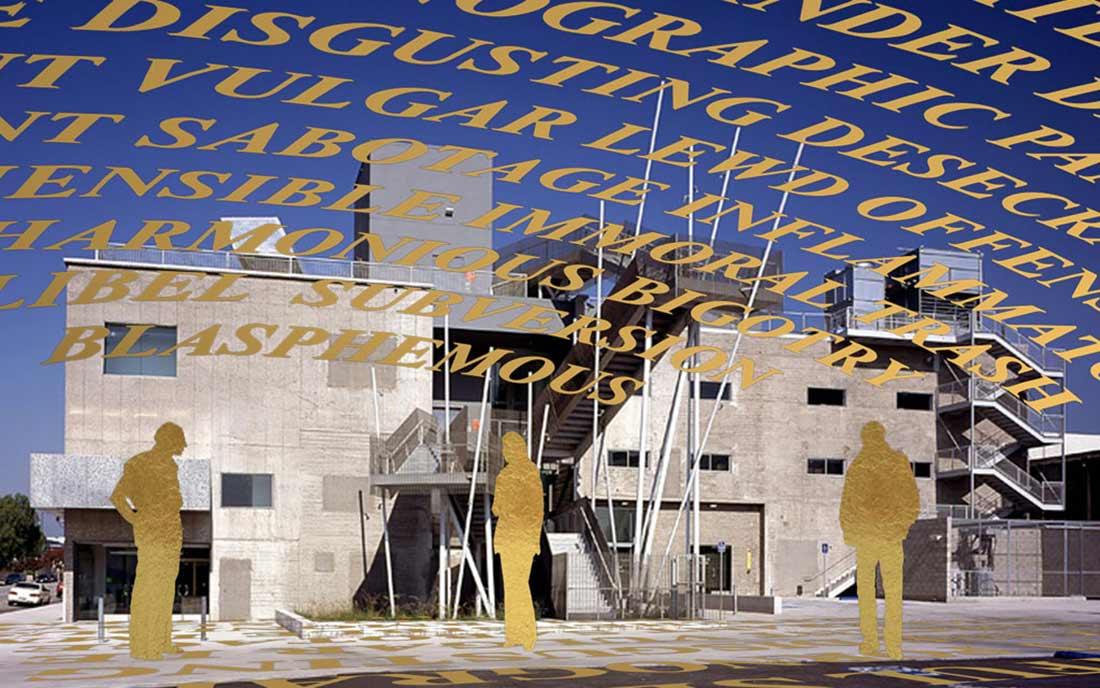Shades of Absence
In these "pavilions of absence," images of contemporary artists whose works have been censored are reduced to gold silhouettes and placed in the midst of terms of transgression. Each erased silhouette stands for countless unknown or lesser known artists who face censorship or persecution with no public support.
The augmented reality artworks are placed on site via GPS coordinates and can be viewed in the displays of smartphones. When viewing the artwork on site, touching the display brings up this list of censored artists, including but not limited to the artists depicted.
[ View website with cases of censorship here ]
There are four artworks in the series:
- "Shades of Absence: Governing Bodies" Addresses artists who have been censored by - or due to threats by - high members of the U.S. government. Premiered in 2013 at the Corcoran Gallery of Art/Corcoran School of Art and Design.
- "Shades of Absence: Outside Inside" Addresses censored artists who, whether considered art world insiders or outsiders, have faced threats of violence or arrest. Premiered as an intervention at the 2011 Venice Biennial, in the protected curatorial space of the Giardini.
- "Shades of Absence:Public Voids" Addresses artists whose works in public spaces have been censored. Premiered as an intervention at the 2011 Venice Biennial, in Piazza San Marco.
- "Shades of Absence: Schlingensief Gilded" A memorial to Christoph Schlingensief, designed specially for the Venice Biennial 2011 German Pavilion, winner of the Golden Lion for best national pavilion for a posthumous exhibition of Christoph Schlingensief's works..
"Shades of Absence" has been shown at the following venues:
- Venice Biennial 2011 AR Intervention During the Venice Biennial 2011, in an uninvited augmented reality intervention, I placed "Outside Inside" in the Giardini main concourse (near the Belgium Pavilion), "Schlingensief Gilded" in the German National Pavilion, and "Public Voids" in the middle of Piazza San Marco. To view: you must be in one of these locations, and go on a smartphone (android or iPhone4) to: manifestar.info/vb11, then launch "Shades of Absence".
- "Not Here," Samek Art Gallery, Bucknell University, Pennsylvania USA
In conjunction with the Manifest.AR guerrilla intervention at the 54th Venice Biennial, the Samek Art Gallery is NOT showing our works. The works however are piled up in front of the gallery door.
- ISEA2011 UNCONTAINABLE / official parallel program to the 2011 Istanbul Biennial
"Not There," Kasa Gallery, Sabanci University, Istanbul
A copy of "Outside Inside" is in the Manifest.AR group show "Not There" in the Kasa Gallery, Sabanci University. To view: go to the Kasa Gallery, and on a smartphone (android or iPhone4) go to: manifestar.info/vb11, then launch "Shades of Absence"
DUMBO Arts Festival, Brooklyn, NY, 2011
In Brooklyn there is a copy of "Outside Inside" underneath the Manhattan Bridge and a copy of "Public Voids" underneath the Brooklyn Bridge. To view: go to one of these locations, and in a browser on a smartphone (android or iPhone4) go to: manifestar.info/vb11, then launch "Shades of Absence" - LA Re.Play, Los Angeles, CA, 2012
"Outside Inside" is sited at the UCLA Broad Art Center, and "Public Voids" is sited both in the L.A. Convention Center and at the Art Center South Campus.
To view: go to one of these locations, and in a browser on a smartphone (android or iPhone4) go to: manifestar.info/vb11, then launch "Shades of Absence" - Corcoran Gallery of Art/Corcoran College of Art and Design, Washington D.C, 2013
The work "Governing Bodies" was created for the Corcoran Gallery and premiered in the show "Manifest:AR." As a physical manifestation, two life-sized banners of artists censored by the Corcoran, Robert Mapplethorpe and Paul Cadmus, were hung in the Corcoran Gallery 31. The augmented reality manifestation is visible all throughout the Corcoran Gallery, in the National Endowment for the Arts officies in the Old Post Office Pavilion, and in the U.S. Capitol Building.
To view: go to one of these locations, and in a browser on a smartphone (android or iPhone4) go to: manifestar.info/vb11, then launch "Shades of Absence"
One database exists already, although the bulk of cases it documents are from the 1990s:
The File Room was a project by Antoni Muntadas begun in 1990. The technology was updated only until roughly 1994- the first beginnings of web technology - and the search facilities are limited, but there are a large number of cases in its database. There is no funding for continued technical development, but visitors can add to the existing database through a web interface.
